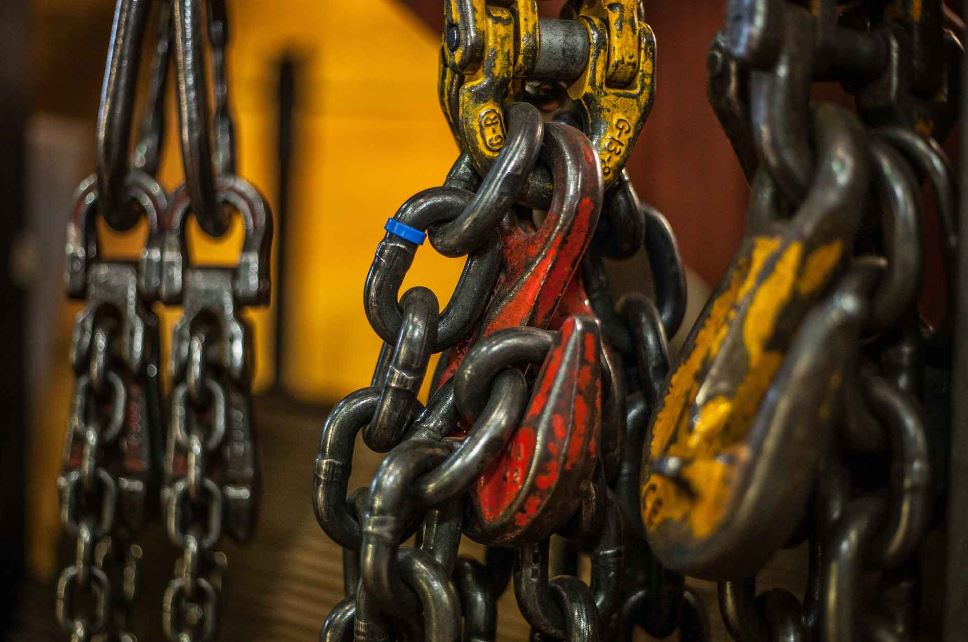Lifting Equipment
The equipment used for lifting Loads – the most widely used lifting equipment used of industrial purposes are – Jacks, Chain -Pulley, Wire Ropes, Block & Tackle, Forklift, Loler, cranes, Hydraulic Lifting Pad, etc. (and many more)
Lifting Equipment Inspection is a detailed inspection in the visual and operational aspects in which every piece of lifting equipment is thoroughly inspected to ensure that they are fully functional for lifting operations.
Usually, lifting equipment inspections are carried out on a regular basis depending on the specifications of gears and their usage.
What is the importance of Lifting Equipment Inspection?
When you are associated with heavy lifting equipment, a number of things can go extremely wrong if maintenance is not taken care of.
The loading capacity of the equipment may not match the weight of the products or the workers may not be properly trained or the equipment itself may not be in the proper state.
Any one of these reasons contributes to creating an unsafe working environment. But these factors are also ones which is easily repairable if necessary steps and maintenance procedures are implemented on a regular basis.
Why Lifting Equipment Inspection makes sense.
1) Scanning for damages.
The most important aspect which makes lifting equipment inspection necessary is the fact that it can help trace any damage. Tracing or tracking down the damage, can help avoid situations of extreme danger.
For example, if any part of the equipment is rusted or already broken, it can cause a life-threatening accident to the worker who is using the equipment.
Lifting equipment inspection will make sure that all the components of the equipment are in good shape and fully operational. Just because a gear appears to be in relatively good shape doesn’t mean that it is optimally functioning. There might easily be a loose screw or a cracked bearing that can prove to be detrimental to your workers.
In case of any repairment requirements, the inspection will let you have a complete and clear outline of what exactly needs to be repaired.
2) Detecting future problems.
Lifting gear inspection will not only give you reports of the present damage but will also let you have access to what kinds of future problems there may be.
An efficient lifting equipment inspection will give you an outline of the gears that are past their prime time and need to be replaced before they become completely dysfunctional and pose to be a dangerous threat.
This will help you to save up on money and efficiency in time by replacing aging gears and materials. It can also help protect your workers from accidents that are completely avoidable.
3) Adaptability to changing needs.
Sometimes, companies tend to update capabilities and tactics, failing to keep in mind how much burden their physical equipment can take on.
For example, if your company has increased production on a larger scale, then your equipment may not be suited to carry out the activities and you may need to update your materials.
Therefore, it is best to remember and take into account the impact of your enhanced activities on your equipment. Perhaps, you may be required to implement a completely overhauled system to meet your activities or you may be required to simply change your regulations and requirements.
Whatever it may be, it is never a bad idea to stay updated on the latest technologies and systems by conducting regular inspections.
Third-Party Inspection of Lifting Equipment
Third Party Inspection Agency involved in Lifting Equipment must ensure that the inspecting officer involve in Lifting Equipment consider the following before performing Lifting Equipment Third-Party Inspection
Third Party Inspection services of Lifting Equipment are used in the Following Stages
- During Manufacturing
- Final Inspection (After Completion of Manufacturing & Assembly)
- In-service Inspection
- Inspection of Lifting Equipment after repair and Maintenance.
Purpose of Third-Party Inspection of Lifting Equipment
Lifting Equipment is used for heavy Load Lifting – If Equipment is not Fit for the purpose it may cause huge Losses – i.e Fatality, Loss of property/damage of products / Equipment Etc
So considering the above potential Risk – the organization using Lifting equipment want to make sure that the Lifting Equipment is fit for use.
So that Third-Party Inspection agencies are used for inspection services.
Specifications of Lifting Equipment
Many IS Codes/ specifications are available for different types of Lifting Equipment – The Third-Party Inspection Agency can refer and develop their own inspection QAP Train to the Inspecting Officer and develop the Standard Inspection Checklist for Each type of Lifting Equipment.
Manufacturer’s Specification and Lifting equipment handbook – can also be referred to and connected with IS Specifications. So that the Third-Party Inspection Agency has a sound inspection Checklist prior to performing the Inspection of Lifting Equipment.
General Inspection and Testing on Lifting Equipment
Some of the most common inspections and Testing for Lifting Equipment are provided below (But This is not Limited). The inspection requirements can be changed case to case. Which can be referred to as the contract between Client Organization and Third-Party Inspection Agency in India.
NDT Testing
Eddy Current
UTM
Magnetic Particle Testing
Load Testing
Bolt Testing
Visual Inspection
Functional Test
